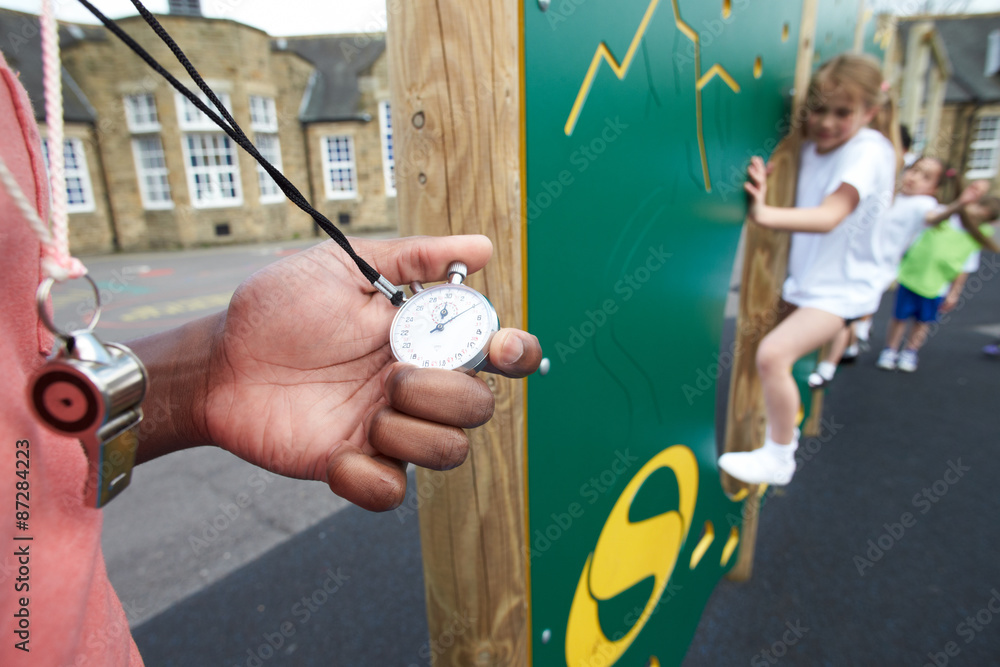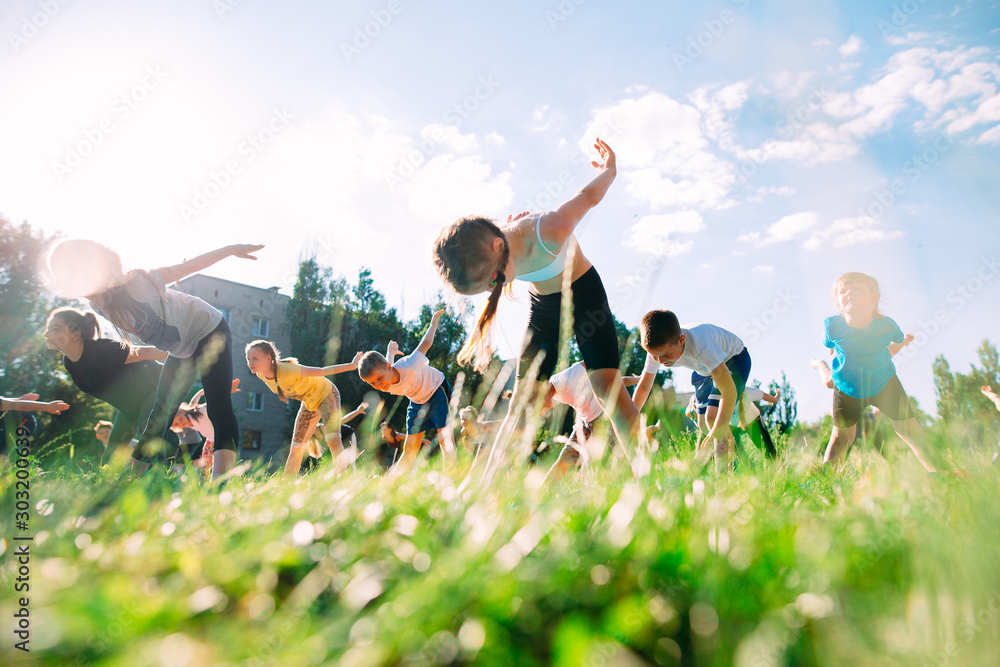Grade 6 Physical Education- Alternate Space Activities Course
Course Design and Rationale
Welcome everyone to my course profile where I will be working on designing a course to be used in Physical Education 6. The goal of this course is to provide alternative spaces and activities for teachers and students to access where physical space such as a gym may be limited. It is all too common in today’s classrooms that student numbers are growing, and space can become an issue especially once students begin moving around. My hope is to provide some lessons and activities, that can be accessed and used in more unconventional spaces throughout the year.
Target Student Population and Timeline
This course will be set up based off the outcomes and indicators laid out in the Saskatchewan Curriculum. I will be designing this class to be used in a split Grade 5/6 class for approximately 25-35 students. The age range in these classes can be anywhere from 9-12 years old, in a straight Grade 6 class you could see 10-12 depending on the time of year. Currently my class is taught in rural Unity, Saskatchewan with 26 students in class. The students have a wide range of abilities and skills when it comes to PE and accommodations/adaptations will be present throughout.
Physical Education usually is taught in the elementary setting for 150 minutes per week and is a yearlong course. With large classes and not enough gym spaces present for many schools, this course should provide alternative activities and settings but still cover the appropriate outcomes asked of Saskatchewan teachers.
Course Format
This course will be taught using a blended approach. Synchronous lessons and course access will be offered at school, with face-to-face instruction. Videos and/or visuals, will be made accessible to students to watch as well.
Course Toolset

Google Classroom Homepage
Our school division uses the Google Suite of products. This class will be set up using Google Classroom. Students are familiar with logging in and accessing material found within it. Students will access the course through adding a class code specific to the class.
We are fortunate enough to still be a 1 to 1 school when it comes to technology. Students have assigned technology while at school and are able to access it at home through the classroom.

Sample Gradebook Screenshot
Other technology sites will also be used in addition to Google Classroom other Google Suite programs such as slides, and docs, will be used. Edsby will be used for parent contact and updating of summative and formative marks. YouTube will be accessed for video examples. Flipgrid will be used to allow students an option for video responses to questions and other sites may be accessed as the course progresses in development.
Course Objectives and Learning Outcomes
The goal of a strong PE class is to promote daily active living strategies and opportunities for students. In class they should be able to develop relationships socially with classmates, and in turn understand their own capacities with physical and mental fitness. As an educator, I want to instill the desire to be lifelong, engaged students who have an appreciation for living a balanced and active lifestyle. In PE, multiple outcomes may be assessed on differing activities. This course will focus on assessing a combination of the following. Essential questions follow each outcome and have been included to guide students through the indicators.
- 6.1 Cardiovascular Fitness– Create and implement a personal health-related fitness plan targeting the health-related fitness component of cardiovascular endurance that involves setting a goal for improvement, applies the F.I.T.T. principle (Frequency, Intensity, Type of activity, and Time), and incorporates daily moderate to vigorous movement activity.
Essential Questions:
- What is the FITT principle?
- How do I sustain moderate to vigorous movement while increasing heart rate?
- How can I set personal goals for my own physical fitness?
- How can I help others achieve and evaluate their own fitness goals?
- 6.10 Alternate Environment & Body Management– Apply controlled use of selected movement skills and variations (i.e., locomotor, non-locomotor, and manipulative skills) as well as safe and environmentally friendly behaviours while participating in a variety of: alternate environment activities and body management activities including dance and educational gymnastics, as well as others
Essential Questions:
- How do outside conditions influence the environment and activity?
- How can I use environmentally friendly behaviours when participated outside?
- How can I participate safely in outdoor activities?
- 6.11 Volunteerism & Leadership– Demonstrate the ability to individually carry out a teacher-assigned or self-selected portion of a cooperatively planned class activity that focuses on engaging others and enhancing their level of participation in movement activity.
Essential Questions:
- How can I organize an activity that benefits my class or community?
- How can I work in cooperation with a group to plan a movement activity for others?
- 6.12 Influences– Analyze the attributes (e.g., height, natural speed of movement, rhythmical sense) and limitations (e.g., physical development, motor disabilities, visual impairments) of self and others as source of information for making decisions related to participation of self and others in movement activity as well as possible career choice implications.
Essential Questions:
- How can I modify exercises or activities to be inclusive for all?
- 6.13 Safety & Rules– Analyze and apply safety guidelines and rules that apply to the target games, invasion/territorial games, and alternate environment activities to develop an appreciation of their impact on self and others.
Essential Questions:
- Why are rules important to activities when it comes to safety?
- How can I clearly communicate safety expectations for activities?
- What safety factors need to be considered for different activities?
- 6.14 Relationship Skills– Apply personally developed plan for progressing through the five levels of a social skills continuum that begins with irresponsible behaviour and progresses through self-control, involvement, self-responsibility, and caring for others to support personal growth in making positive connections to others, while participating in movement activities.
Essential Questions:
- How can I role model proper behaviours for others?
- Why is it important to take personal responsibility and self-monitor during activities?
Assessment Plan
Students will be assessed summatively at the culmination of each activity through rubrics and self-evaluation. Students will be asked to answer short questions through conversations with the teacher, using Flipgrid to answer, or by completing a short assignment with reflection questions. Feedback will be provided through comments on assignments in Google Classroom, or through conversations with the teacher. A 4 point scale will be used for each outcome found above.

Adapted from Living Sky School Division Assessment Handbook
Formative assessment will take place through the learning of each class with teacher check-ins and exit slips at the end of class. These conversations will allow for students to stay on track towards the end goal of the assignment, allow for extra support, make sure students are engaged correctly with the content, and to gauge their learning.
Considerations and Concerns
Internet connection will be a priority to access Google Classroom. Students who are absent or have low bandwidth, will have the opportunity to access paper copies of the assignments. Students who need assistance answering questions will have the ability to use Speech to Text through Google Docs or will be given the option to answer questions with the teacher or use Flipgrid to record answers. For EAL learners, in class demonstrations with visuals will be made available. As always, physical limitations of students will be considered for their abilities to participate in any given assignment. If they cannot participate due to injury or other reasons, students will still be able to offer guidance of their roles through conversation. All assignments will be poste d through the Google Classroom so students who are absent will still be able to access content.
d through the Google Classroom so students who are absent will still be able to access content.
Conclusion
Well there it is. I’m still unsure how the course will entirely unfold but I am curious whether or not any of you have had experiences in your schools with alternative classroom spaces having to be used. My hope is to design some fun for the students outside of the typical brick and mortar gym walls.


Hi Graeme
Thank you for your course profile. this is the best topic that you chose for your course profile because it will be very helpful for children to provide awareness about health. I really like the questions that you chose for your lesson plan for every topic.
Thanks Shivali! I hope that it becomes a valuable resource for me to use in the future too.
Hi Graeme. I enjoyed reading this profile for a grade 6 PE class. Using Google classroom for these outcomes on relationships and leadership is brilliant. Students get fed up with the same old ways of teaching classes like PE. This will give students a whole new perspective on how to be successful in PE. I like it.
Thanks Eddy. My hope is it will give them the opportunity to also expand their PE experiences outside of the gymnasium. Get outdoors, and find out how they can be active in any setting.
Hi Graeme!
I love that you are thinking outside the box a little bit and using technology in physical education which is often not as common. I look forward to reviewing your course and giving you some feedback! I am a phys. ed major however I actually haven’t been able to teach phys. ed since my internship 6 years ago so I am excited to see what you are doing.
Hey Katherine,
I find we have all of this technology in our classrooms and there are so many great resources and videos out there that tie into PE that this would be the perfect opportunity to try and incorporate more of them. Coincidently, I am not even a PE major or minor, actually a Visual Art major and I’m currently not even teaching that! Although, I sure do miss it.